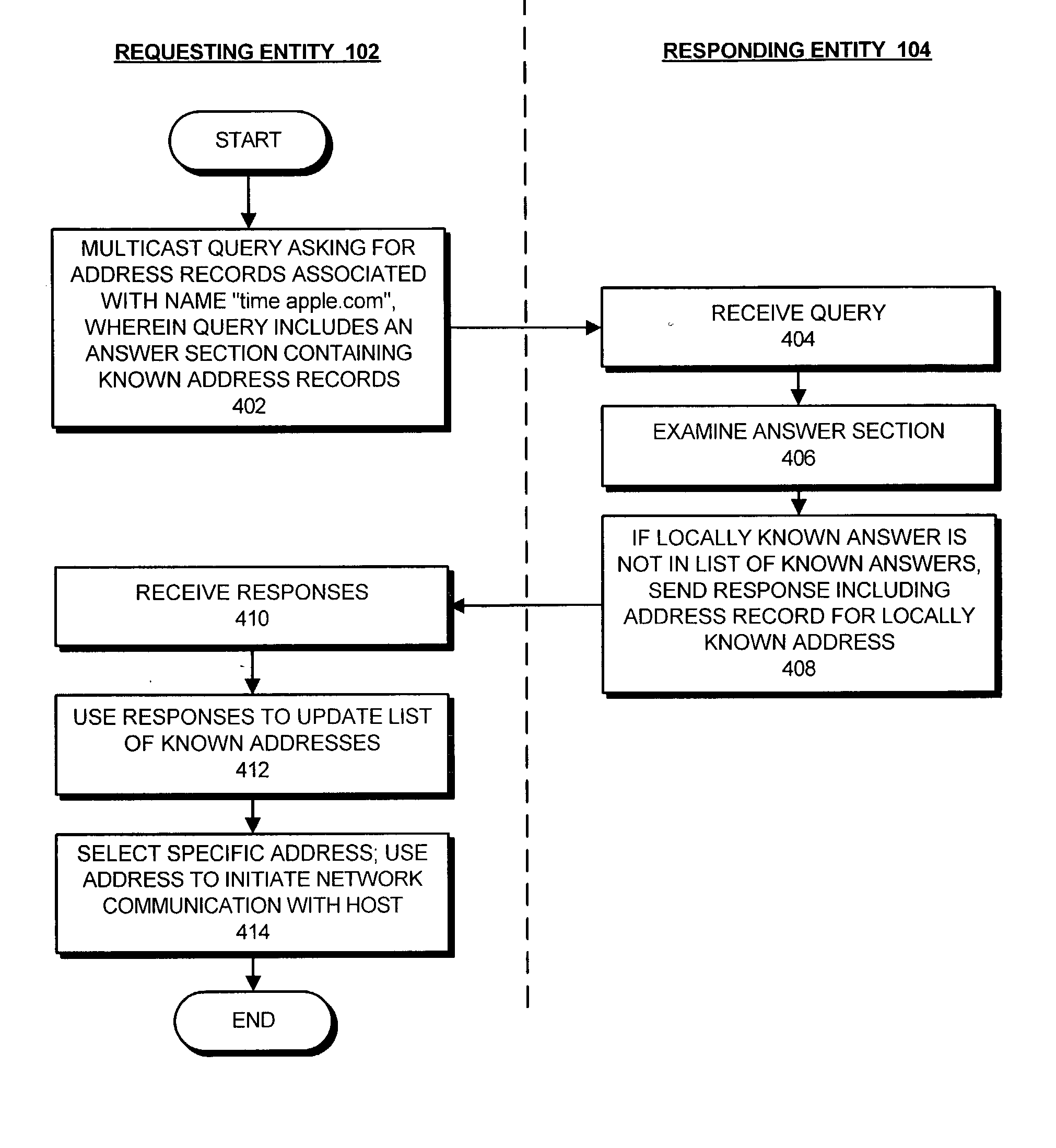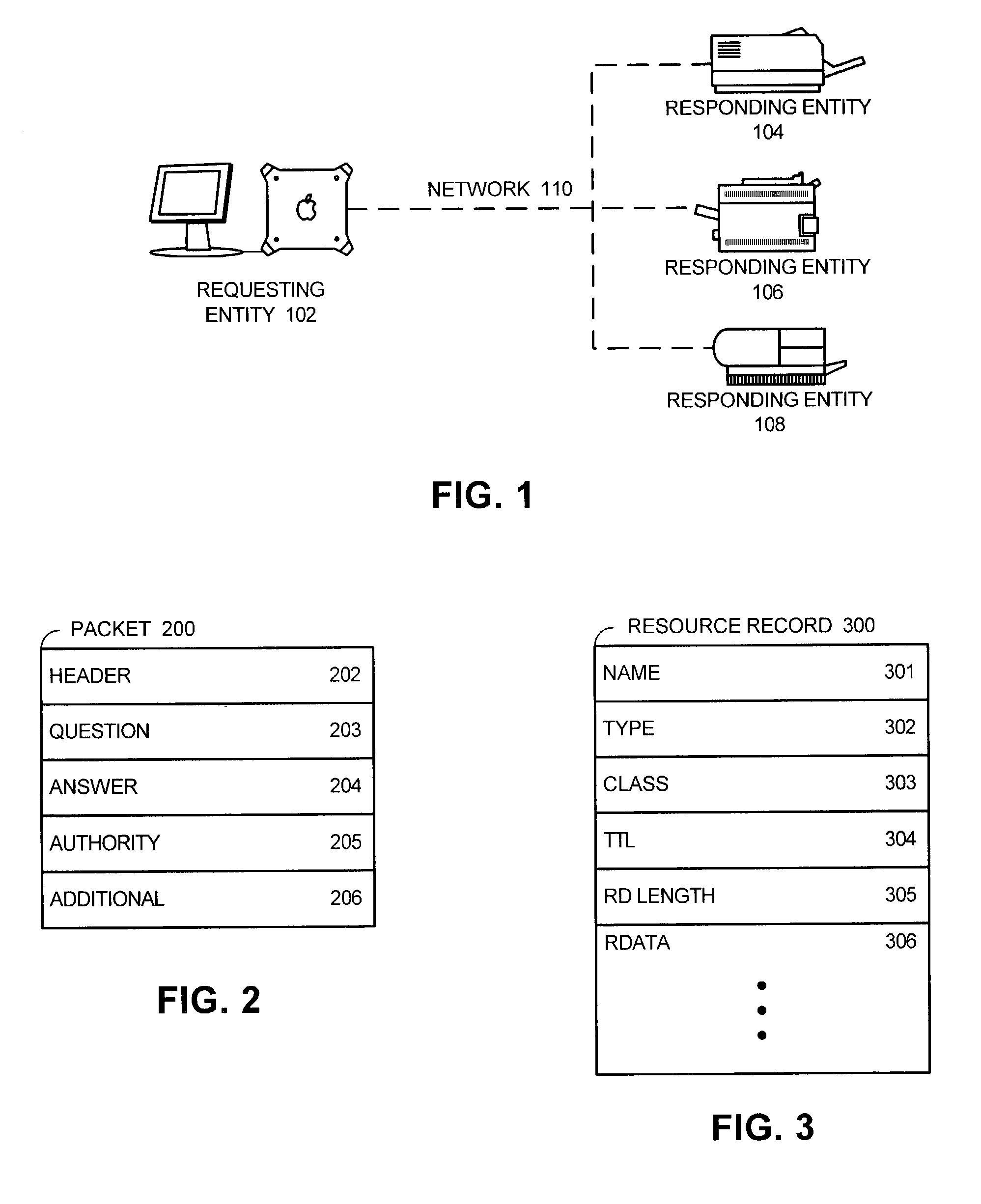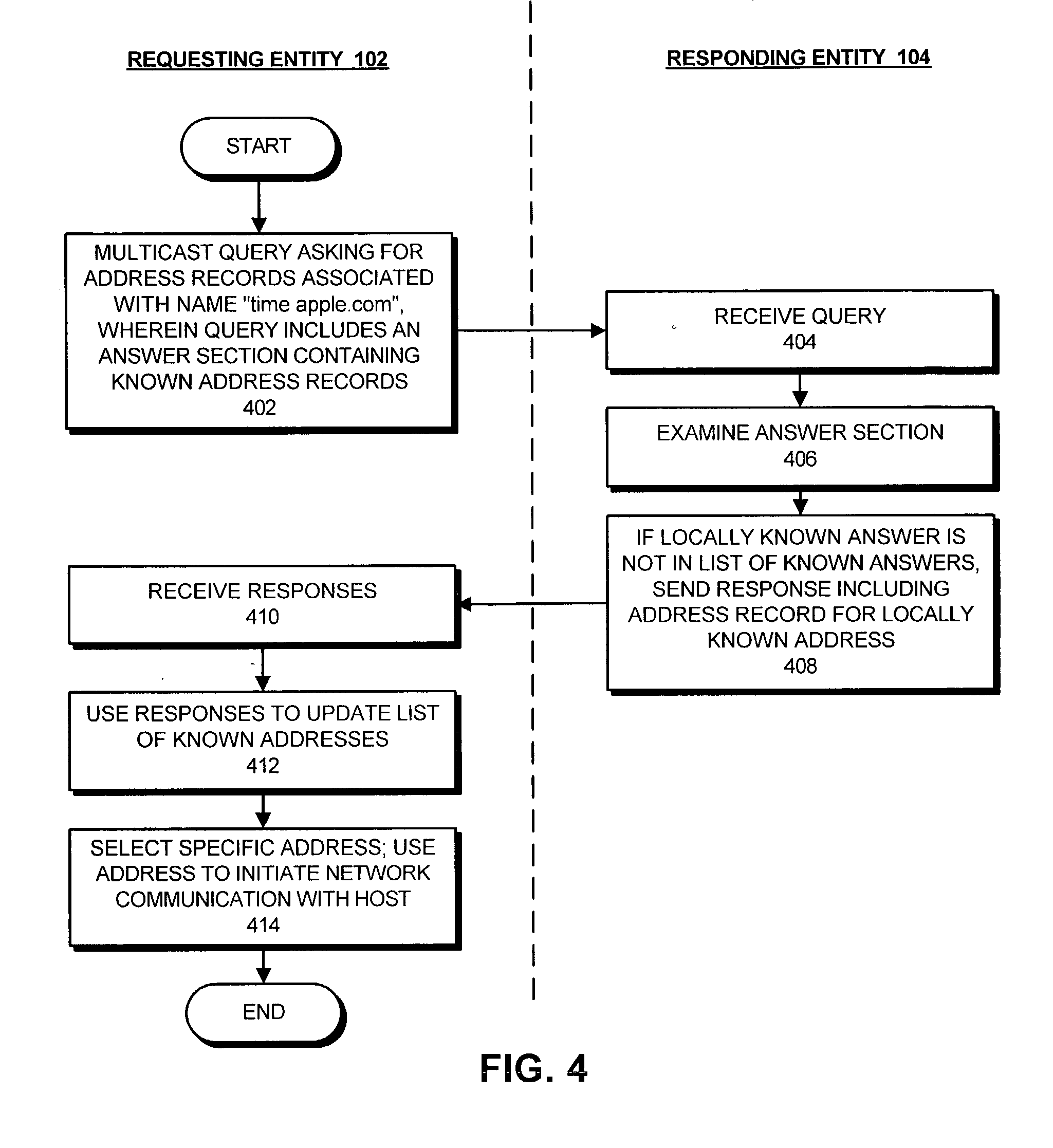Method and apparatus for supporting duplicate suppression when issuing multicast queries using DNS-format message packets
a message packet and multicast query technology, applied in the field of computer networks, can solve problems such as the risk of losing any particular query or respons
- Summary
- Abstract
- Description
- Claims
- Application Information
AI Technical Summary
Problems solved by technology
Method used
Image
Examples
Embodiment Construction
: DUPLICATE SUPPRESSION DURING ADDRESS RECORD LOOKUP
[0029] In one example, the present invention supports duplicate suppression during address record lookup. FIG. 4 is a flow chart illustrating this process.
[0030] During operation, requesting entity 102 transmits a multicast query across network 110 asking for address record(s) associated with the name "time.apple.com." (step 402). This query includes an answer section containing a list of known address records that match that name.
[0031] Next, a responding entity 104 receives the query (step 404) and examines the answer section (step 406). If responding entity 104 contains a locally known answer that is not included in the list of known answers in the answer section, responding entity 104 sends a response to requesting entity 102 containing an address record for the locally known address (step 408).
[0032] Next, requesting entity 102 receives responses to the query (step 410) and uses the responses to update its list of known addres...
PUM
 Login to View More
Login to View More Abstract
Description
Claims
Application Information
 Login to View More
Login to View More - R&D
- Intellectual Property
- Life Sciences
- Materials
- Tech Scout
- Unparalleled Data Quality
- Higher Quality Content
- 60% Fewer Hallucinations
Browse by: Latest US Patents, China's latest patents, Technical Efficacy Thesaurus, Application Domain, Technology Topic, Popular Technical Reports.
© 2025 PatSnap. All rights reserved.Legal|Privacy policy|Modern Slavery Act Transparency Statement|Sitemap|About US| Contact US: help@patsnap.com



